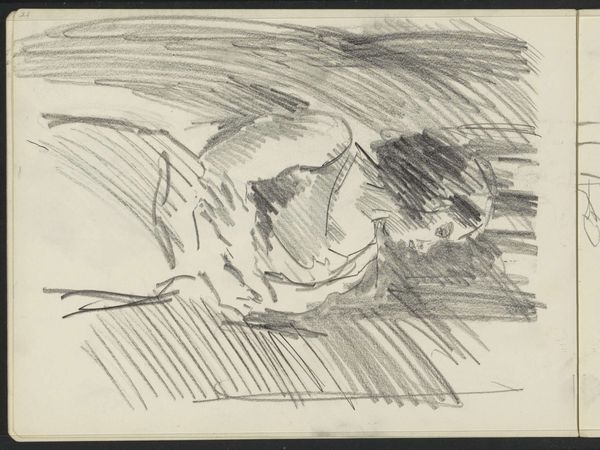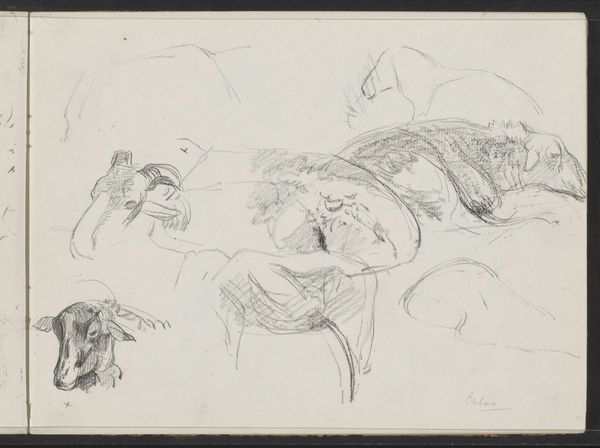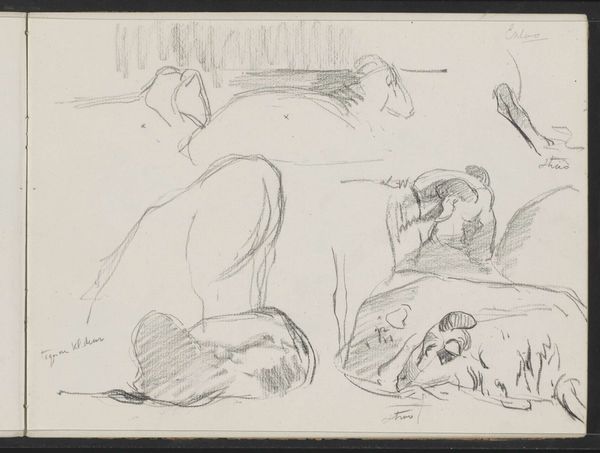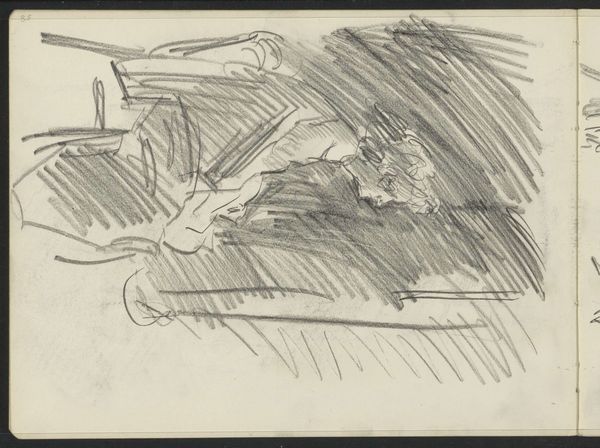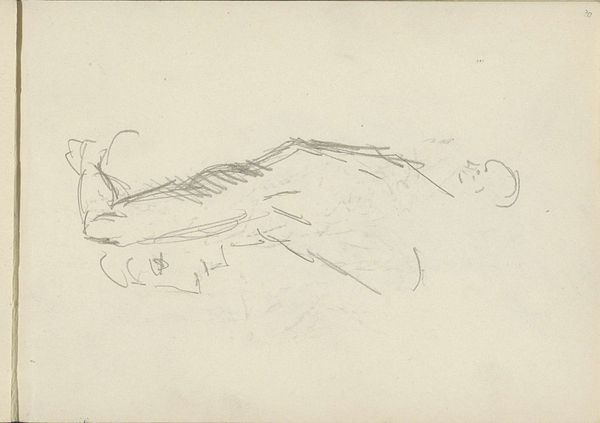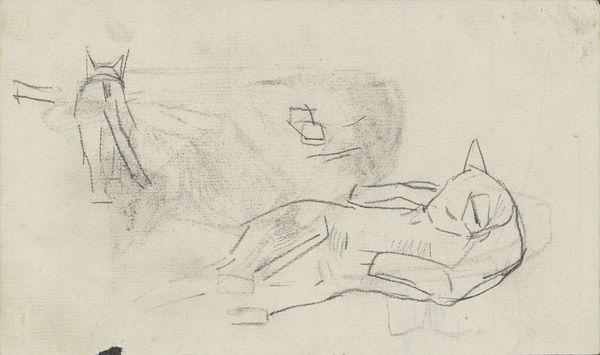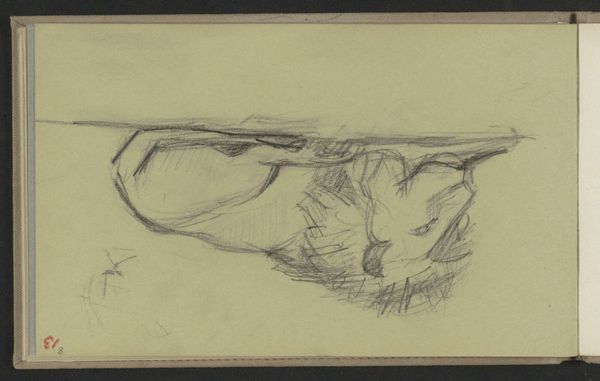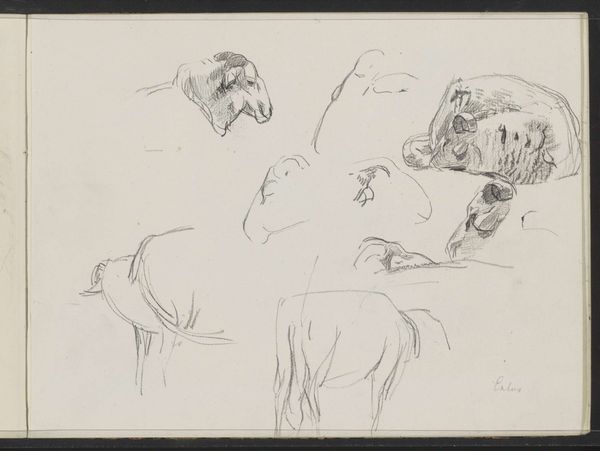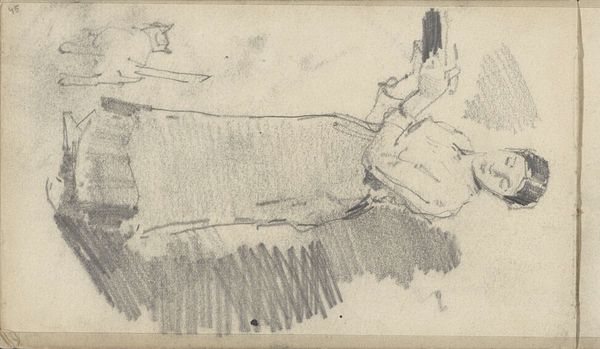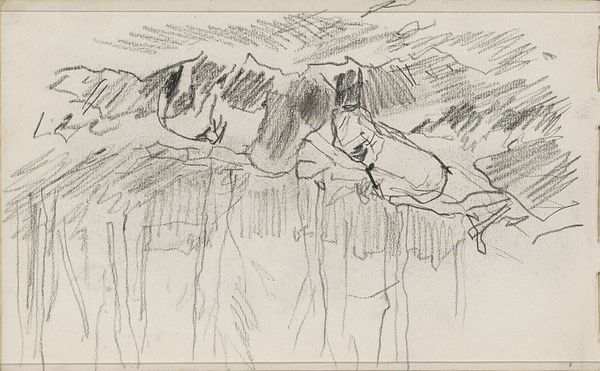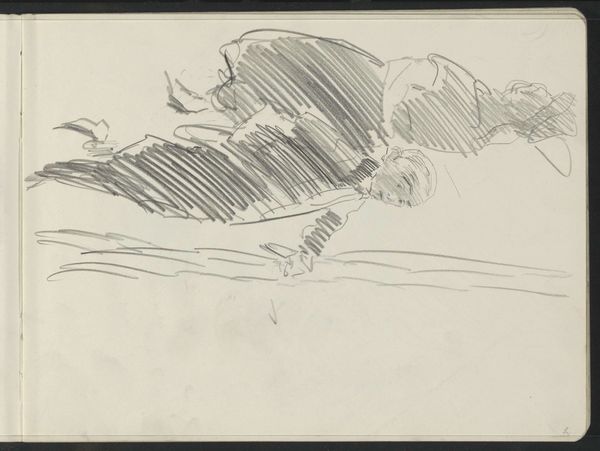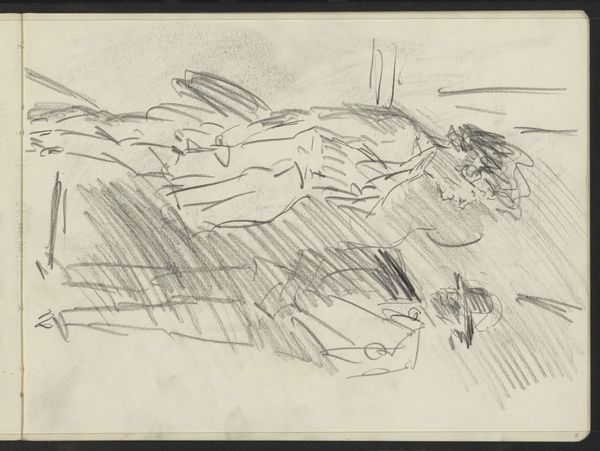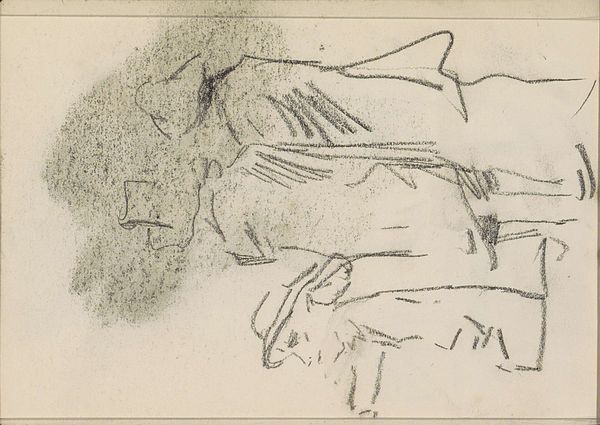
Copyright: Rijks Museum: Open Domain
Curator: This is Isaac Israels' "Standing Man with Hands Behind Back," likely created sometime between 1875 and 1934. It's currently housed here at the Rijksmuseum. A simple, but captivating drawing using pencil. What's your immediate take? Editor: The man appears cornered, maybe restrained. It speaks to postures of authority but also potentially to powerlessness, doesn't it? The loose sketching style contributes to this sense of fleeting vulnerability. Curator: It's intriguing that you pick up on that, because Israels' style often captures a moment, an ephemeral quality. He’s known as an Impressionist, after all, seeking to depict modern life. Where does this particular artwork sit within that view? Editor: Knowing it’s Israels, and the period, this image seems more than just a depiction of a single man, doesn’t it? It points towards broader questions of masculinity and control prevalent in those decades, particularly its shifting presentation across classes. The sketch's unfinished quality mirrors societal norms around male composure: strength, never vulnerability. Curator: Indeed. We see those issues expressed as recurring visual and theoretical themes during this period. The lack of detail forces the viewer to consider those larger contextual meanings and perhaps to fill in the narrative themselves. What do you think is implied by Israels by removing almost all context? Editor: I’d suggest Israels omits these contexts to suggest that it isn't the surrounding spaces and social class that shape one's identity; rather, the expression comes from within, though restrained by the societal and masculine demands we are all burdened by. The work speaks to the construction of identity itself. Curator: His work often reflects a modern sensibility. He was interested in depicting the immediacy of life. Editor: Absolutely, and to me, this drawing embodies those interests, showing a human caught in the act of just existing—his back to a presumed reality he cannot avoid, however stoic he may appear. Curator: Considering all these contextual cues helps reframe Israels' snapshot not as mere visual record but as an intimate sociopolitical assertion. Editor: Definitely. I am glad to think about the tension in identity the artwork is expressing through this approach.
Comments
No comments
Be the first to comment and join the conversation on the ultimate creative platform.
